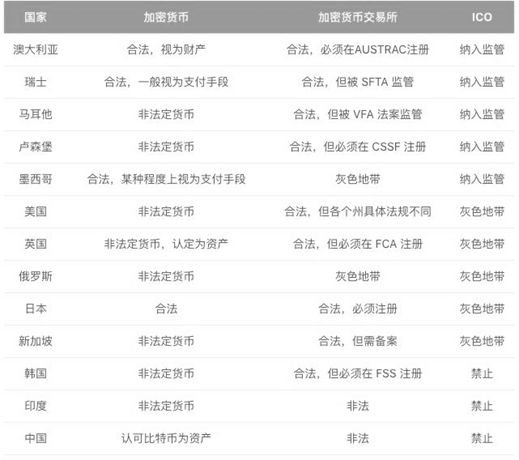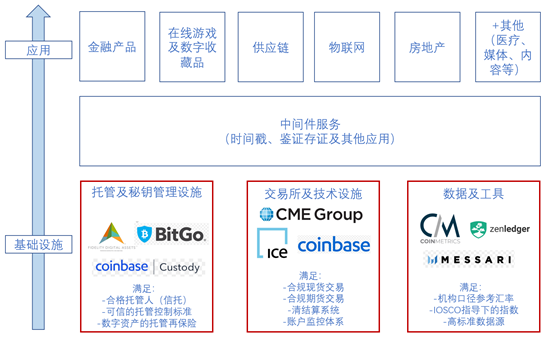In the second half of the blockchain investment, is the organization running for admission?
Author: Howard
Source: Consensus for the future
Introduction: After the madness of the ICO riches in 2017 and the disappointment of the 2018 bubble burst, by 2019, blockchain investment entered the second half of the wave. Today, we saw several exciting institutional investors entering the market: Galaxy Digital, the US encryption investment bank, announced the launch of two bitcoin funds, the Galaxy Bitcoin Fund and the Galaxy Institutional Bitcoin Fund. In terms of compliance, Fidelity's Fidelity Digital Assets FDAS from the United States announced that it has obtained a New York State Trust license; DCG's Greyscale Grayscale Investment is also expected to receive the first US dollar SEC approved Bitcoin Trust. In addition, a Shenzhen-based Jude Gold Control from China will cooperate with two Chinese institutions to establish a global digital banking alliance blockchain investment fund with a scale of US$1 billion.
Although the secondary market for blockchain investment has remained sluggish recently, it is clear that institutional investors' enthusiasm for investment in the blockchain asset market has not changed. Therefore, it is necessary to sort out the underlying logic and key points of institutional investors' participation in blockchain and digital asset market investment.
- Official announcement! Bakkt cash settled bitcoin futures will go live on December 9
- Bitcoin fell below the 8000 mark, can the spot be admitted?
- Jianan Technology Landed on NASDAQ: The First Block of the Global Blockchain was born
1. The underlying logic of institutional investors' investment
Institutional investors are not the same as retail investors. First of all, from the perspective of investment appeals, retail investors are more inclined to short-term speculative trading needs, and institutional investors often pursue long-term value investment needs. Second, retail investors are small in terms of capital, while institutional investors tend to have large management scales. Third, retail investors are less concerned about regulatory compliance and risk control, and institutional investors need to fully assess all the risks of investment targets, including regulation, and try to minimize investment risks.
Institutional investors entering a new asset market must have a convincing investment logic to support their investment decisions. We believe that at least two underlying logics support the blockchain and digital asset institutional investors, which is also determined by the blockchain as two attributes of technology and finance.
Money First: Considering existing digital assets as an alternative asset, compared to traditional financial assets (gold, stocks, bonds, derivatives, etc.), the existing digital asset market is very small, which can be seen from the following figure. There is a glimpse into it.

As of today, the total market value of BTC is still hovering around 150 billion US dollars. The total market value of digital assets is only 220 billion US dollars, far lower than Internet giants such as Microsoft, Apple, Amazon, etc., and the entire gold (780 billion US dollars) or stock market capitalization (344,000). Compared with the billion dollars, it is even more insignificant. This is one of the investment logics for institutional investors to look at their future growth potential and enter the market.
Tech First: As an emerging technology, the blockchain will revolutionize the paradigm shift of technology. We can carefully evaluate it from The Fabric Ventures Investment Thesis published by a Fabric Ventures, represented by IBM, Facebook, and Google. The Web2.0 era has the drawback of centralized monopoly and data abuse, and the new generation technology wave centered on the blockchain will not only achieve better data privacy protection, intergenerational transformation of computing architecture, but also organizational form. The transformation, from the technical infrastructure, development tools and data management framework, to build a Web3.0 era with flexibility, security and privacy protection.
The following picture is a good demonstration. Starting from the era of mainframe hardware represented by IBM, it began to enter the era of Microsoft software in the 1980s. The Internet pioneer represented by Netscape opened the era of Web1.0, represented by Google. The Internet giant opened the Web2.0 era, and the blockchain technology represented by Bitcoin and Ethereum pushed the door of Web3.0. Paradigm shifts led by blockchain technology or another important investment logic for institutional investors to enter the market.

2. Basic conditions for institutional investors to enter the market
In the more than ten years since the birth of Bitcoin, the participation of institutional investors has also been a gradual admission. The main reason is the uncertainty of regulatory policies , because Bitcoin represents the decentralization of super-sovereign digital assets. The characteristics of distribution and circulation, globalization, and anonymity are free cash outside the government's monetary regulatory policy, which is undoubtedly a major challenge to the traditional monetary system and financial regulation.
The position of the Hong Kong Securities and Futures Commission (SFC) last month on the regulation of virtual asset trading platforms is widely considered to be substantial progress on the road to digital currency exchanges and digital asset compliance. Although the legality of digital assets represented by ICO still has greater uncertainty, Bitcoin has become a tradable alternative asset recognized by mainstream countries after more than ten years of development.
We can see from the chart below that the attitudes of the global mainstream countries or regions to the alternative assets of the blockchain have changed considerably:

The clarity of the regulatory policy will lay an important foundation for institutional investors to enter the market. But in addition to regulatory compliance policies, institutional investors need some important industry infrastructure. We understand that these industry infrastructures should include at least three aspects:
First you need a qualified hosting . Although companies such as Coinbase Custody, Fidelity, and BitGo have provided a complete set of hosting solutions, regulators including the US Securities and Exchange Commission (SEC) still lack clear control standards. Should a custodian hold a legal specific digital asset escrow license? Can a broker hold digital assets? How does Bitcoin adapt to these managed parameters? Should the custodian have a professional insurance agency to contract? Is it subject to public audit? These issues still need to be clarified.
The second aspect is regulated spot trading venues and futures exchanges . Although Coinbase already provides a secure, compliant spot exchange, it is not investment grade in terms of functionality (eg combined order book, algorithmic trading, data generation, etc.), and we note that Coinbase is currently preparing to acquire cryptographic brokers. It is necessary for Tagomi to serve institutional investors to complement their end-to-end comprehensive integration services. At the same time, we also need a clear settlement process between the clear settlement process and the spot marketplace to achieve transparent transaction records. Thirdly, the old-fashioned traditional financial institutions represented by CME and ICE are on the line of Bitcoin futures, especially the bitcoin futures of the well-received Bakkt settlement in September, laying an important foundation for institutional investors.
The third aspect is the need for a strong data provider that needs to adapt to the organization level . They need a reference exchange rate that can reference digital assets, allowing institutional investors to conduct market-marked transactions. Data providers such as Coinmarket Cap, which exist in existing markets, remain a centrally steerable data market with many trust issues. We need to establish a cryptographic index tool under the guidance of the International Securities Commission (IOSCO) to provide a high standard of data sources. There are some start-ups in the market such as Coinmetrics and Messari that have already begun to make some useful attempts, but they are not enough.

Only after these underlying infrastructures are in place can institutional investors be able to truly join the market for cryptographic assets.
3. Institutional investors' first-mover advantage
Just like the traditional Internet market, there is a typical “winner-take-all” rule. For example, Google has more than 90% of the search share, and Apple accounts for 87% of the total profit of the smartphone market. Amazon has 51 in the global cloud computing market. % share. We expect the blockchain market to be the same. Typically, Bitcoin, as the forerunner of digital assets, still accounts for 66% of the overall digital asset market. Bitcoin has a 60% share in the overall mining machine market. Coinbase is in BTC-USD. The market share of the transaction accounted for more than 35%.
For institutional investors, the first-mover advantage brought by the first-time place will also become the winning way of the fund. We believe that institutional investors need a rich reach to diversify their portfolios and attract more blockchain winners. The following picture shows the top eight blockchain unicorn companies currently rated:

In addition to traditional equity investments, we see that prophetic institutional investors enter the market in a variety of other ways, including computing investments, secondary hedge funds, trust product funds or derivatives.
4. Challenges faced by institutional investors
Since the beginning of 2019, the national or super-sovereign form of digital reserve currency has ushered in a wave. In the United States, the Fed's team is studying the digital dollar. The withdrawal of the Chinese central bank from DCEP is likely to become the world's first national digital currency. Outside the national level, Libra's official website, the digital asset project announced by Facebook in June, has been launched, creating a simple, borderless currency and financial infrastructure for billions of people.
We can foresee that once these digital currencies appear, institutional investors will have no choice but to trade these digital assets as transaction pairs, resulting in the current digital currency market issuance system (various including USDT, PAX, USDC, etc.) Stabilizing coins) has a big impact. In addition,
At the macro level, due to the implementation of quantitative easing policies by governments and the emergence of larger deficits due to increasingly difficult debt levels, it is likely to lead to large macroeconomic uncertainties, even the black swan of sovereign state bankruptcy. It is not impossible for an event to happen. At the market level, because Bitcoin is halved, and the secondary market price is still sluggish, the entry of institutional investors brings more risk factors, especially the tail risk is much higher.

We have reason to believe that 2020 will be a year in which institutional investors need to be fully prepared to enter the world of digital trading assets.
We will continue to update Blocking; if you have any questions or suggestions, please contact us!
Was this article helpful?
93 out of 132 found this helpful
Related articles
- Fundraising has shrunk nearly 80% after Jianan Technology went public
- The central bank, the SAFE, and the banking associations led the banking blockchain alliance, and the troika attacked the international financial market.
- Want to go to the "profit road" Blockchain analysis company Chainalysis layoffs 20%
- Study the Times and publish a comment: the development of blockchain must handle five relationships
- Market analysis on November 22: The downward trend of BTC has basically been clear or the market is low
- The Ethereum difficulty bomb started, the block time increased and the block reward decreased.
- The first day of the listing suffered a huge earthquake: the world's second largest bitcoin mining machine manufacturer Jia Nan Zhi Zhi opened 40%, and finally broke





